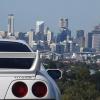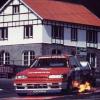Sway Bar Rate Vs Spring Rate
Announcements
-
Similar Content
-
Latest Posts
-
Haha well if the internet is supposed to be better in NZ I can hardly believe that 🤣 The first one was a really good price from harlow a few years back. The last one was pretty pricey. However to get them road legal in switzerland costs 10-20k. So they are always expensive here if you don't import them yourself. I have a full professional workshop so nothing I can't fix myself 🙂 that helps a lot. But prices for spare parts in general are no joke anymore... everybody wants to make money now.
-
Nothing beats the mechanical feel of the old 1990's Japanese sports cars though. At least that's what I think when I drive my crapbox once a quarter.
-
NZ has better cars and internet, you did well lmao. nice ride mate, I should've got a Stagea while they were cheap.
-
By Dose Pipe Sutututu · Posted
Hell yeah, NEO head ftw! Also you and Brad probably bought all the spare NEO heads lying around and drove the price of them right into the stratosphere lol. -
Will definitely visit the happy country soon as well 🙂 From what we hear over here alot of kiwis move to Aus as well because of jobs, weather ect.
-







Recommended Posts
Create an account or sign in to comment
You need to be a member in order to leave a comment
Create an account
Sign up for a new account in our community. It's easy!
Register a new accountSign in
Already have an account? Sign in here.
Sign In Now